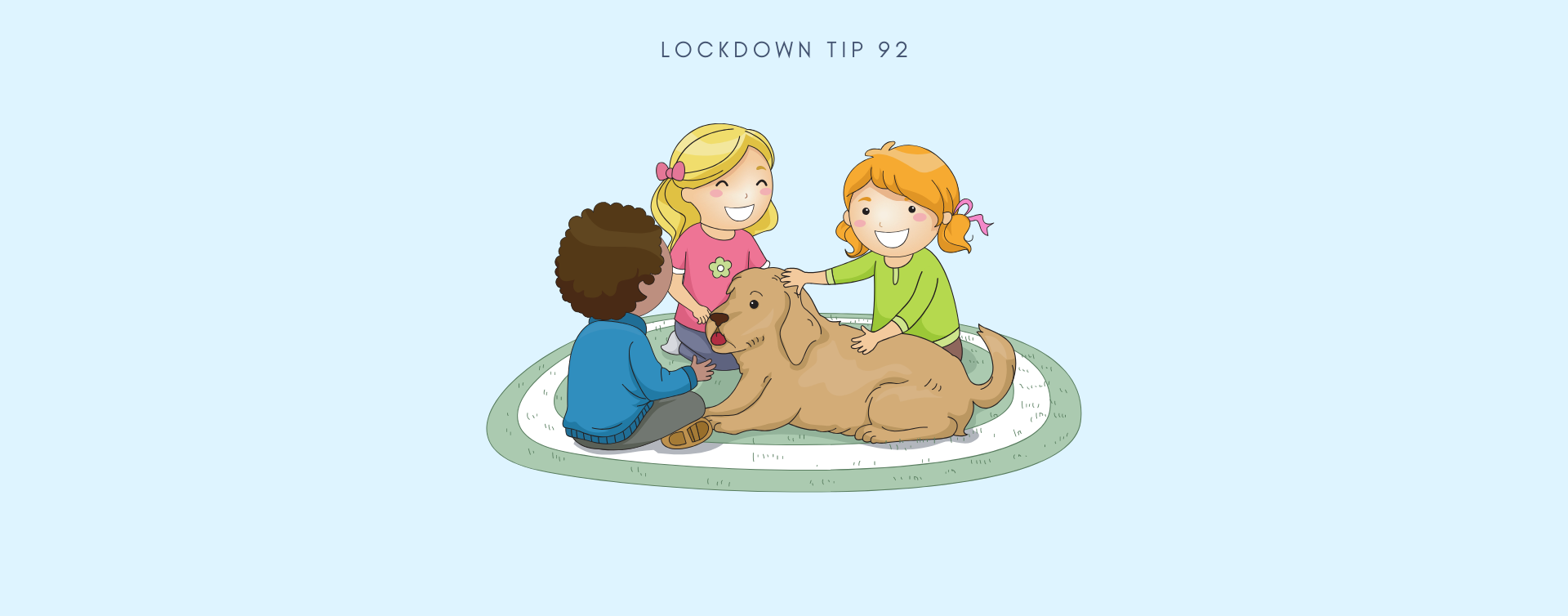Lockdown Day 92 – KUW
* OUR PETS *
Our pets are extensions of our families. They provide us with much joy and comfort and are an opportunity for young children to learn about caring for other living things. Many children have responsibilities in their homes regarding their pets. Feeding, providing fresh water and cleaning are all aspects of pet-care that form part of their daily routines.
Pets also offer us an opportunity to develop the child’s sense of the animal kingdom. You may like to discuss with your child/ren some of the following concepts regarding the animals that share our homes.
PHYLUM CLASSIFICATION
Animals can be classified in various ways. Firstly, determine if your pet is a VERTEBRATE (with backbone) or an INVERTEBRATE (without backbone).
Vertebrate animals can be classified into groups called PHYLA. This is a word your Montessori children would have heard from preschool. There are five phyla in the vertebrate classification.
The common names for these phyla are; fish, amphibians, reptiles, birds and mammals. Here are some examples:
- Common household pets and their corresponding phyla:
- Goldfish: fish
- Snakes, bearded dragons and tortoises: reptiles
- Budgies and parrots: birds
- Dogs, cats, guinea pigs, hamsters and mice: mammals
Generally speaking, amphibians like frogs, toads and salamanders do not make good pets!
Discuss with your child the classifications of your pet according to its phylum. Children enjoy ordering their world and find these conversations stimulating. It is especially interesting when children discover that humans are also mammals!
DIETARY CLASSIFICATION
Your pet can also be classified according to what they eat. This would involve unpacking the diet of the animal to determine whether it is a HERBIVORE, CARNIVORE or OMNIVORE.
Consider the dog. Typically, dogs would be classified as a carnivores. But did you know that they are actually classified as omnivores with a carnivorous bias? The dog food we buy today often contains rice and other grains, so it is not strictly eating meat only.
Older children can explore how living with man has caused the dog to adapt its eating patterns from its ancestor the wolf which is strictly carnivorous.
SLEEPING PATTERN CLASSIFICATION
In our lockdown post #50 we introduced you to the classification of nocturnal and diurnal animals. This is a good place to revisit this concept. Hamsters and mice are good examples of nocturnal animals. Even cats have their nocturnal tendencies!
LANGUAGE EXTENSIONS
There are many learning opportunities for language extension in these discussions.
- Discuss the names of the female, male and young of the species.
- Introduce the collective nouns of the animals.
- Explore the adjectives, verbs and adverbs that could be used when talking about each of the animals.
****
It would be great if these discussions extended into the world of animals in general. If your child is showing interest, use the ‘I wonder’ technique to prompt her/him to classify farmyard animals, wild animals or ocean animals in this way. If you are not sure where an animals fits, your friend Google will be able to clarify.
Enjoy exploring the wonderful world of your pets and see where the ‘I wonder’ questions take you!
****
Find all of our lockdown tips here – https://montessorisa.co.za/blog/



